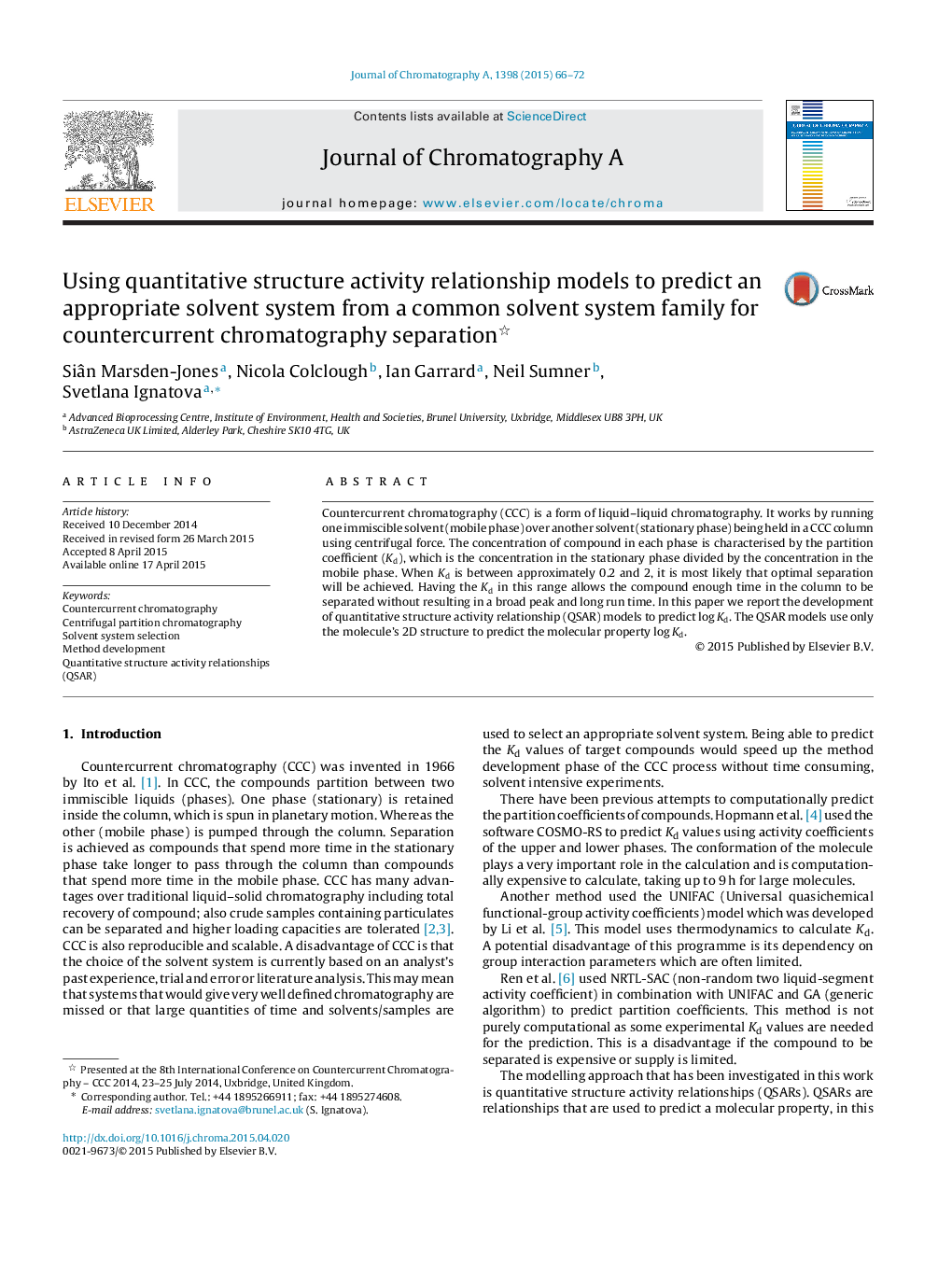| Article ID | Journal | Published Year | Pages | File Type |
|---|---|---|---|---|
| 1199428 | Journal of Chromatography A | 2015 | 7 Pages |
•Quantitative structure activity relationship (QSAR) models have been developed.•The QSAR models have been built for the six HEMWat solvent systems.•A data set of the log Kd values of 54 compounds in six HEMWat systems was generated.
Countercurrent chromatography (CCC) is a form of liquid–liquid chromatography. It works by running one immiscible solvent (mobile phase) over another solvent (stationary phase) being held in a CCC column using centrifugal force. The concentration of compound in each phase is characterised by the partition coefficient (Kd), which is the concentration in the stationary phase divided by the concentration in the mobile phase. When Kd is between approximately 0.2 and 2, it is most likely that optimal separation will be achieved. Having the Kd in this range allows the compound enough time in the column to be separated without resulting in a broad peak and long run time. In this paper we report the development of quantitative structure activity relationship (QSAR) models to predict log Kd. The QSAR models use only the molecule's 2D structure to predict the molecular property log Kd.
